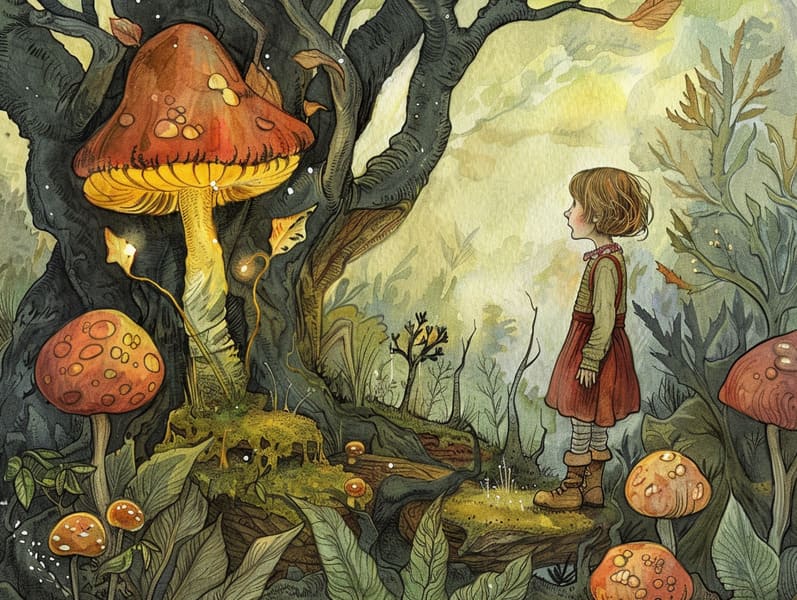
Traditional fairy tales have long histories. These tales have been told from one generation to the next millennia before they were ever transcribed. They developed from a variety of civilizations, including European traditions. They were initially conveyed among mature audiences, often carrying themes and messages mirroring the societal norms and beliefs of the time.
The Grimm brothers, the two Grimm brothers, were among the first to assemble many of these beloved stories. Their volume, "Grimm's Folk Tales," included stories like "The True Bride," "Hansel and Grethel," and "The True Story of Snow White," which have since become staples in the world of beloved fairy tales. Similarly, Hans Christian Andersen's enchanting stories, such as "The Sea Maid," and "The Duckling that Could," have gained the love worldwide, establishing their place in the pantheon of timeless fairy tales.
Despite their historical roots, these tales remain as applicable as ever, especially as children's bedtime stories. These enchanting tales are now available in numerous formats, including gorgeously illustrated books, delightful animations, and online storybooks.
Their unwavering allure can be connected to several whimsical characteristics:
Moral Lessons: Timeless fairy tales often whisper important moral lessons. Fairy tales like "The Shepherd Boy and the Wolf" teach the value of being truthful, while "The Race of the Tortoise and the Hare" show the values of determination and modesty. These narratives offer little ones clear distinctions between correct and incorrect, guiding their moral compass in a tender yet deep way.
Warmth and Understanding: Traditional fairy tales frequently showcase protagonists facing problems and hurdles, prompting audiences to identify with their struggles and cheer for their triumphs. For instance, "Beauty and the Beast" conveys the necessity of seeing inner beauty to realize the inner spirit of a being, building tenderness and perception.
Cultural Recognition: Many fairy tales are rich in the cultural contexts from which they arose. Exploring these narratives can provide intriguing perspectives into different beliefs, nurturing a sense of world insight and comprehension.
Inventiveness and Fantasy: The fanciful elements in classic fairy tales—mythical creatures—boost children’s innovations. These tales transport readers to mythical realms, invigorating creative ideas and a sense of amazement that stays a lifetime.
Old fairy tales are not only charming but also instructive. They act as alluring tools in enhancing various intellectual and emotional capacities in children. When traditional fairy tales are recited, they improve speaking abilities by presenting new language and complicated sentence structures. This practice also strengthens listening abilities and focus, as young ones keep up with the story, prepared to see what happens next.
Furthermore, exploring the themes and characters of fairy tales can promote cognitive skills and cognitive skills. The young are led to spot patterns, guess what will happen, and comprehend cause and effect. These examinations also advance young ones communicate their thoughts and feelings, nurturing their emotional intelligence.
In today’s digital era, the availability of online fairy tales has made these tales more obtainable than ever. Internet resources and apps offer wide arrays of bedtime fairy tales that can be looked at or listened to anytime, anywhere. Fairy tales spoken are particularly favored, making available an captivating way for young ones to savor these charming awesome site tales. Audio stories and voiced videos lead characters and settings to life, often complemented by charming musical scores and harmonies that amplify the narrative journey.
The everlasting appeal of timeless fairy tales lies in their ability to change to current eras while continuing with their basic principles. Contemporary revisions of these stories often present more multicultural protagonists and modern settings, making them relevant to today’s audience. However, the underlying themes of fortitude, warmth, and honesty remain unchanged, continuing to strike a chord with young listeners of all ages.
Timeless fairy tales also offer a sense of warmth and comprehensibility. They disclose a systematic narrative with a distinct beginning, middle, and end, often closing with the wrap-up of conflicts and the triumph of virtue over corruption. This reliability can be placating for children, offering a sense of invariability in an variable world.
Old fairy tales continue to fascinate and edify new generations, maintaining their appeal and pertinence in modern society. As nighttime stories for kids, they highlight a perfect blend of magic and knowledge, furthering moral values, empathy, and creativity. The abundance of digital storybooks and the well-received status of fairy tales spoken warrant that these timeless tales remain within reach to new generations.
By holding onto and distributing these tales, we continue to commemorate the rich tapestry of cultural heritage and cultural heritage. Whether you are delving into a vividly illustrated book, browsing a internet collection, or listening via an read-aloud book, the captivation of famous fairy tales is always within reach. These fairy tales highlight of the continued impact of narratives and its ability to draw us together across eras and regions.
Be it you are discovering a artistically illustrated book, viewing a online library, or listening to an audio story, the elegance of traditional fairy tales is always within reach.
These stories reveal of the unchanging magic of stories and its ability to bond us across epochs and places, casting a charm that charms and informs alike.